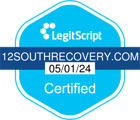Many people don’t realize there is a significant difference between substance use and substance abuse. Substance use has its risks, however, substance abuse can contribute to worsening risks and consequences. One of these risks is the development of a substance use disorder (SUD). Differentiating substance use from substance abuse is a necessary skill to reduce health risks and the potential development of SUD.
The Normalization of Substance Use in Society
Throughout history, substance use has been an integral element of society. Many people rely on their morning coffees for energy before work or school. Others may have grown up in homes where alcohol use was normalized as a way to wind down after a long work day. Furthermore, certain cultures have relied on plant medicines for spiritual ceremonies and experiences for thousands of years. All in all, every drug has a long history of use and has been acknowledged for its benefits in some way or another.
While substance use is not inherently bad, every type comes with its own set of risks and consequences. These consequences can become especially apparent when an individual begins to develop a dependence on their substance of choice.
Can Coffee Be Abused?
Take coffee, for example. This caffeinated beverage is used by millions of individuals every day as a source of stimulation. Many people may not consider its health risks, since drinking coffee is a normal part of daily life. But when an individual begins to rely on their morning coffee to function, it can be problematic.
They may experience withdrawals, appearing irritated and aggravated, when they do not get their morning fill of caffeine. Additionally, they may need to increase the amount of coffee they drink to experience their desired level of stimulation. These phenomena of withdrawal and tolerance can be seen in every type of substance use. Likewise, these phenomena can help individuals better recognize when their substance use may be developing into substance abuse.
When Substance Use Becomes Substance Abuse
According to youth.gov, substance abuse is defined as a harmful pattern of substance use that surfaces distress or impairment in an individual’s life. Several warning signs may indicate that an individual’s substance use is developing into substance abuse. Some examples may include the recurrent use of alcohol and other drugs:
- Leading to failure to respond to major responsibilities, such as work, school, or childcare
- In situations or circumstances where substance use is physically dangerous, such as driving under the influence
- Causing legal problems
- Contributing to persistent and recurring issues in interpersonal relationships, such as increased conflict
What Is Substance Misuse?
Other definitions for substance abuse, such as the one defined by usa.gov, incorporate the phrase “substance misuse.” Their definition of substance abuse is “the misuse of alcohol, prescription or over-the-counter medications, and the use of illegal drugs.” But what exactly defines substance misuse?
According to the U.S. Department of Health and Human Services (HHS), “Substance misuse is the use of alcohol or illicit or prescription drugs in a manner that may cause harm to users or to those around them.” For prescription drugs, examples of substance misuse may include taking a prescription in a dose or manner other than what was prescribed by a doctor or using someone else’s prescription. Examples of illicit drug misuse, on the other hand, involve any use of illegal drugs. Meanwhile, examples of alcohol misuse include binge drinking and heavy drinking.
When an individual uses any substance with the intent to get high, it is considered substance abuse. Substance abuse can quickly inform SUD if it is not addressed and treated properly. In any case, understand that recovery from substance abuse and SUD is possible with professional treatment.
Warning Signs for Substance Abuse
The Indian Health Service (part of the U.S. Department of HHS) highlights physical, behavioral, and psychological warning signs of substance abuse and SUD. Some of these include:
- Physical warning signs: Bloodshot eyes, changes in appetite, deterioration of physical appearance, weight loss or weight gain
- Behavioral warning signs: Increased interpersonal conflict, appearing secretive or suspicious, neglecting personal responsibilities, unexplained financial problems, increased drug tolerance, loss of control over drug use
- Psychological warning signs: Appearing fearful, anxious, or paranoid, lack of motivation, sudden mood swings, unexplained changes in personality
There are also specific warning signs that can surface from each type of substance use. Becoming familiar with these warning signs and risk factors, especially for alcohol use, can be extremely beneficial when preventing substance abuse in loved ones.
Substance Use in Moderation
Families need to understand that no type or amount of substance use is considered “safe.” Even drinking alcohol in moderation can lead to several health consequences as well as increase an individual’s risk of chemical dependence and SUD. Although whether or not an individual uses drugs is ultimately their choice, abstinence is inevitably the safest option.
Unfortunately, it is not uncommon for individuals to not know the difference between substance use, misuse, and abuse. However, knowing these differences can proactively prevent addiction from developing in yourself or a loved one. It can also help you to recognize warning signs that may require you to utilize professional treatment. 12 South Recovery is an addiction and mental health treatment center that is well-equipped with the knowledge and experience to help you overcome substance abuse and addiction. We offer a wide range of treatment programs and services to ensure that our interventions can meet all of our client’s needs. If you or a loved one is struggling with substance abuse, call us today at 866-839-6876.


















